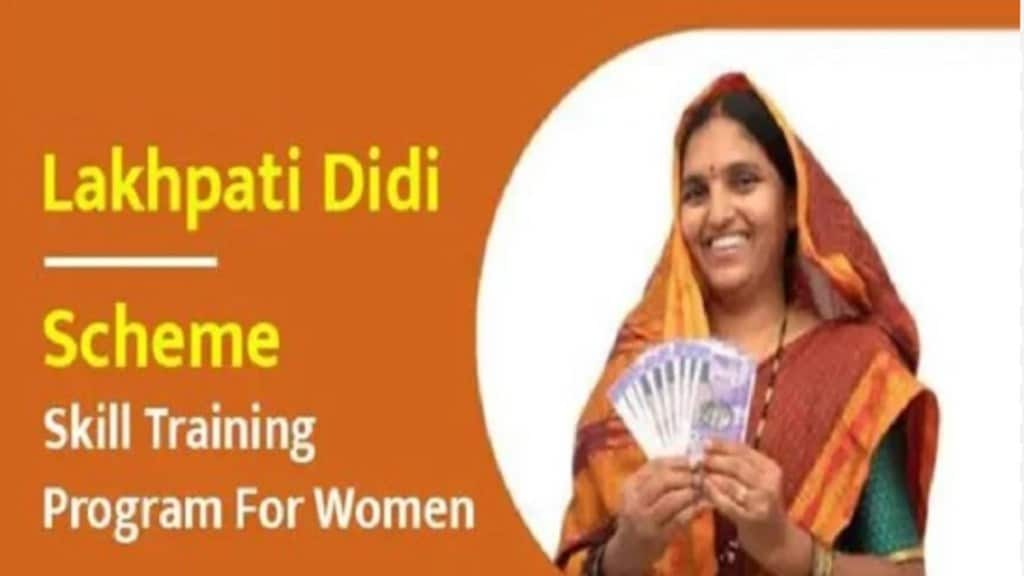By Pratik Modi and Satyendra Pandey
In India’s countryside, a powerful change is happening, led by women known as ‘Lakhpati Didis’. These women, with big dreams of earning at least Rs one lakh every year for their families, are at the heart of a movement that’s making the country’s economy more inclusive. The recent budget announcement by Union Finance Minister Nirmala Sitharaman, aiming to scale up the ‘Lakhpati Didis’ initiative, marks a significant stride by the government towards fostering rural women’s empowerment. By setting an ambitious target, the government not only reiterates its commitment but also showcases a proactive stance in nurturing the grassroots of rural communities. This initiative, now aiming to reach 3 crore women, up from the initial target of 2 crore, embodies a bold vision of empowerment and prosperity for rural women, reflecting the government’s dedication to crafting a more equitable and self-reliant society.
At the core of the ‘Lakhpati Didi’ initiative’s success are the 83 lakh Self Help Groups (SHGs) across India, which collectively impact the lives of 9 crore women. These SHGs have been instrumental in catalysing change within the rural economy by fostering financial independence and entrepreneurial spirit among women. This ‘Lakhpati Didi’ initiative is all about giving rural women the chance to learn new skills, like how to fix pipes, make LED bulbs, or even use drones for farming. It’s a big deal because it not only helps these women make more money but also brings new opportunities and independence to them and their communities. These programs are not just about skill development; they are about redefining the rural economy’s future through the lens of women-led growth.
The government’s approach, emphasising the FAST (Frequently discussed, Ambitious, Specific, and Transparent) methodology for goal setting, introduces a novel paradigm in achieving the enhanced targets. This approach underscores the need for goals that are not only ambitious but also clear, transparent, and a subject of continuous dialogue among stakeholders. Such a strategy ensures that the objectives of the ‘Lakhpati Didis’ initiative remain at the forefront of policy implementation, creating a dynamic and inclusive path to tangible outcomes. The initiative’s ambitious target to transform 3 crore women into ‘Lakhpati Didis’ is grounded in a solid foundation of success stories and potential. For instance, the program has already enabled nearly 1 crore women to achieve the lakhpati status, showcasing the significant impact of SHGs in transforming rural socio-economic landscapes. This success is further bolstered by the comprehensive benefits offered by the scheme, including skill training, connection with SHGs, introduction of new women to these groups, provision of drones for agriculture, and various other benefits aimed at fostering financial literacy, vocational training, and insurance coverage.
The FAST approach necessitates a collaborative effort across various sectors, with Panchayats, Farmer Producer Organizations (FPOs), Community-Led Federations (CLFs), and Higher Educational Institutes (HEIs) playing crucial roles. For instance, Panchayats can ensure that the aspirations and progress of ‘Lakhpati Didis’ are integrated into local governance, fostering community engagement. Similarly, FPOs and CLFs can offer specific support systems, providing crucial market linkages and resources, while HEIs can disseminate entrepreneurial skills and knowledge, ensuring informed decision-making and transparency.
To further strengthen the efficacy of the ‘Lakhpati Didi’ initiative, several actionable steps can be undertaken:
Strengthening digital infrastructure: Enhancing digital connectivity is vital for empowering ‘Lakhpati Didis’, enabling their ventures to gain market access and achieve financial inclusion. This effort is critical in bridging the urban-rural divide and providing a platform for these women to amplify their economic footprint.
Customised skill development programmes: Tailoring skill development programs to meet the unique entrepreneurial needs of rural women is pivotal. Such programs equip ‘Lakhpati Didis’ with the necessary tools to adapt and flourish in a dynamic market landscape.
Expanding financial services: Financial products specifically designed for rural women can facilitate their economic resilience and growth. These services can also foster financial discipline, leveraging the existing foundation developed within SHGs.
Building market linkages: Technology-driven market linkages can connect ‘Lakhpati Didis’ with broader markets, ensuring their products reach a diverse customer base. This strategy enhances market penetration and ensures fair compensation for their contributions.
Fostering partnerships: Creating a holistic support network through partnerships across government, the private sector, and non-profit organisation is crucial. Private sector collaboration can equip ‘Lakhpati Didis’ with necessary skills and integrate them into sustainable business models, paving the way for enterprise growth and community engagement.
The story of the ‘Lakhpati Didis’ is about more than just making money. It’s about changing the way rural entrepreneurship is seen and done in India. By following the FAST approach, this initiative not only helps individual women become financially independent but also brings about big changes in rural business practices. It shows that success can be about innovation, making a positive impact in the community, and being environmentally friendly.
Pratik Modi, Dean – School of Management, BML Munjal University.
Satyendra Pandey, Institute of Rural Management Anand.


